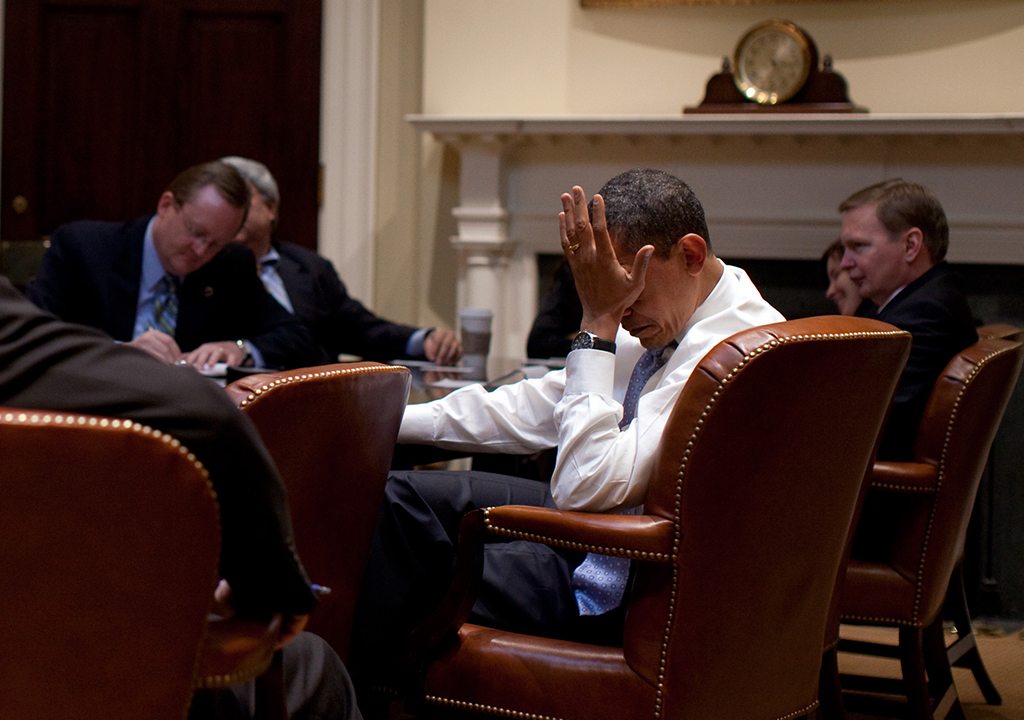A few days ago, Politico reported that Trump was basically ignoring his policy team that is at work crafting plans for how the administration will govern. But Catherine Traywick and Jennifer A Dlouhy got a scoop on what some of those folks are digging into with regards to energy policy.
Advisers to President-elect Donald Trump are developing plans to reshape Energy Department programs, help keep aging nuclear plants online and identify staff who played a role in promoting President Barack Obama’s climate agenda.
The transition team has asked the agency to list employees and contractors who attended United Nations climate meetings, along with those who helped develop the Obama administration’s social cost of carbon metrics, used to estimate and justify the climate benefits of new rules.
Most of the reaction to that news has been to focus on the targeting of employees and contractors – which is, indeed, ominous. But it’s also interesting to pair that information with an article by Valerie Volcovici and David Shepardson titled, “Trump’s EPA pick could have a surprisingly tough time dismantling Obama’s environmental legacy.” In listing the hurdles Scott Pruitt might face in an effort to dismantle the climate change efforts put in place by the Obama administration, they included this:
Another option Pruitt could take would be to challenge the very basis upon which Obama’s EPA created many of its climate change focused regulations: its finding that carbon dioxide endangers public health. Successfully overturning the so-called “endangerment finding” would remove the foundation upon which most of the administration’s clean air regulations were based, experts said.
But doing so would be hard given the volumes of scientific research that support it, and the requirement to build up a new case that shows carbon dioxide is innocuous.
The effort would likely also trigger lawsuits. The DC Circuit Court of Appeals, which hears all cases challenging federal clean air rules, has been supportive of the scientific evidence for manmade climate change.
In order to understand what the Trump policy team is up to, it might be helpful to review two of the foundational steps the Obama administration took that undergird their actions on climate change. First of all, in 2009 the EPA declared carbon dioxide and five other heat-trapping gases to be pollutants that endanger public health and welfare – thus making it legal for the executive branch to regulate them under the Clean Air Act. This was not just a simple declaration.
According to the E.P.A. announcement, the finding was based on rigorous scientific analysis of six gases — carbon dioxide, methane, nitrous oxide, hydrofluorocarbons, perfluorocarbons and sulfur hexafluoride — that have been widely studied by scientists. The agency said its studies showed that concentrations of the gases were at unprecedented levels as a result of human activity and that it was highly likely that those elevated levels were responsible for an increase in average temperatures and other climate changes.
Among the ill effects of rising atmospheric concentrations of the gases, the agency found, were increased drought, more heavy downpours and flooding, more frequent and intense heat waves and wildfires, a steeper rise in sea levels and harm to water resources, agriculture, wildlife and ecosystems.
That is why Volcovici and Shepardson note that it would be difficult to challenge the regulations based on this declaration in court.
Traywick and Dlouhy suggest that Trump’s policy team is specifically interested in another finding by the Obama administration related to the social cost of carbon. Jay Michealson calls this one the “most historic climate change decision yet.”
The costs of a particular regulation…are sometimes easy to assess. But how do you capture the “benefits” of preventing cataclysmic climate change?
Beginning in 2010, a group of economists and scientists set about answering that question. They tried to calculate the likely future costs of shifting climate zones, agricultural disruptions, more extreme events like Superstorm Sandy, more outbreaks of disease, and the many other effects of climate change.
The result is the Social Cost of Carbon (SCC), which, long story short, was calculated to be $36 per ton. That figure, while admittedly an approximation, is the best estimate that the government has put forward so far.
In 2014, the DOE used this social cost of carbon to regulate commercial refrigeration. Industry groups sued and last fall, the 7th U.S. Circuit Court of Appeals upheld their use of the metric.
“We conclude that DOE acted in a manner worthy of our deference,” Senior Judge Kenneth Ripple, who was appointed by President Reagan, wrote in the opinion.
Judges William Bauer and Ilana Rovner, both Republican appointees, were the other members of the three-judge panel that heard the case.
It is clear that the policy wonks Trump is ignoring are busy at work trying to find ways around the science on which these policies are based. But it looks like their only options are going to be to promote more anti-science.



